3-(3-HYDROXYPHENYL)PROPIONIC ACID
Synonym(s):3-(3-Hydroxyphenyl)propanoic acid;NSC 33135;NSC 39468
- CAS NO.:621-54-5
- Empirical Formula: C9H10O3
- Molecular Weight: 166.17
- MDL number: MFCD00016554
- EINECS: 210-692-8
- SAFETY DATA SHEET (SDS)
- Update Date: 2023-05-18 11:31:10
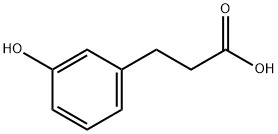
What is 3-(3-HYDROXYPHENYL)PROPIONIC ACID?
The Uses of 3-(3-HYDROXYPHENYL)PROPIONIC ACID
3-Hydroxyphenylpropionic Acid was found as an urinary metabolite of Procyanidins in pigs. 3-Hydroxyphenylpropionic Acid is also an intermediate in the synthesis of various organic synthetic products .
The Uses of 3-(3-HYDROXYPHENYL)PROPIONIC ACID
3-Hydroxyphenylpropionic acid acts as a urinary metabolite of procyanidins in pigs. It also serves as an intermediate in the preparation of various synthetic organic products. Further, it is used in the preparation of 3-(3-hydroxy-phenyl)-propionic acid methyl ester.
Definition
ChEBI: A monocarboxylic acid that is propionic acid carrying a 3-hydroxyphenyl substituent at C-3.
Biochem/physiol Actions
3-(3-Hydroxyphenyl)propanoic acid is one of the major metabolites of ingested caffeic acid and of the phenolic degradation products of proanthocyanidins (the most abundant polyphenol present in chocolate) by the microflora in the colon. 3-(3-Hydroxyphenyl)propanoic acid is suspected to have antioxidants properties and is actively absorbed by the monocarboxylic acid transporter (MCT) in intestinal Caco-2 cell monolayers.
Properties of 3-(3-HYDROXYPHENYL)PROPIONIC ACID
| Melting point: | 111 °C |
| Boiling point: | 355℃ |
| Density | 1.260 |
| Flash point: | 182℃ |
| storage temp. | Sealed in dry,Room Temperature |
| solubility | Soluble in chloroform and methanol. |
| form | Solid |
| pka | 4.68±0.10(Predicted) |
| color | Pale Beige to Light Brown |
| BRN | 1947445 |
| CAS DataBase Reference | 621-54-5(CAS DataBase Reference) |
Safety information for 3-(3-HYDROXYPHENYL)PROPIONIC ACID
| Signal word | Warning |
| Pictogram(s) |
 Exclamation Mark Irritant GHS07 |
| GHS Hazard Statements |
H303:Acute toxicity,oral H315:Skin corrosion/irritation H319:Serious eye damage/eye irritation H335:Specific target organ toxicity, single exposure;Respiratory tract irritation |
| Precautionary Statement Codes |
P261:Avoid breathing dust/fume/gas/mist/vapours/spray. P304+P340:IF INHALED: Remove victim to fresh air and Keep at rest in a position comfortable for breathing. P305+P351+P338:IF IN EYES: Rinse cautiously with water for several minutes. Remove contact lenses, if present and easy to do. Continuerinsing. P405:Store locked up. |
Computed Descriptors for 3-(3-HYDROXYPHENYL)PROPIONIC ACID
New Products
4-Fluorophenylacetic acid 4-Methylphenylacetic acid N-Boc-D-alaninol N-BOC-D/L-ALANINOL Tert-butyl bis(2-chloroethyl)carbamate 3-Morpholino-1-(4-nitrophenyl)-5,6-dihydropyridin- 2(1H)-one Furan-2,5-Dicarboxylic Acid Tropic acid S-2-CHLORO PROPIONIC ACID ETHYL ISOCYANOACETATE 2-Bromo-1,3-Bis(Dimethylamino)Trimethinium Hexafluorophosphate (6-METHYL-[1,3]DITHIOLO[4,5-b]QUINOXALIN-2-ONE INDAZOLE-3-CARBOXYLIC ACID 4-IODO BENZOIC ACID (2-Hydroxyphenyl)acetonitrile 4-Bromopyrazole 5,6-Dimethoxyindanone 2-(Cyanocyclohexyl)acetic acid 4-methoxy-3,5-dinitropyridine 2-aminopropyl benzoate hydrochloride 1-(4-(aminomethyl)benzyl)urea hydrochloride diethyl 2-(2-((tertbutoxycarbonyl)amino) ethyl)malonate tert-butyl 4- (ureidomethyl)benzylcarbamate Ethyl-2-chloro((4-methoxyphenyl)hydrazono)acetateRelated products of tetrahydrofuran

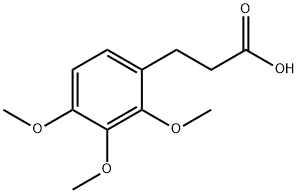

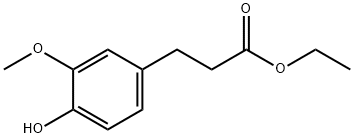

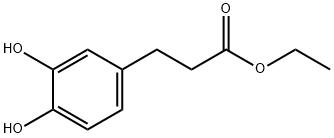

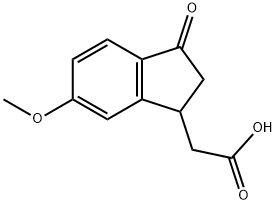
You may like
-
 3-(3-Hydroxyphenyl)propionic acid CAS 621-54-5View Details
3-(3-Hydroxyphenyl)propionic acid CAS 621-54-5View Details
621-54-5 -
 2033-24-1 98%View Details
2033-24-1 98%View Details
2033-24-1 -
 1975-50-4 98%View Details
1975-50-4 98%View Details
1975-50-4 -
 2-HYDROXY BENZYL ALCOHOL 98%View Details
2-HYDROXY BENZYL ALCOHOL 98%View Details
90-01-7 -
 2-Chloro-1,3-Bis(Dimethylamino)Trimethinium Hexafluorophosphate 221615-75-4 98%View Details
2-Chloro-1,3-Bis(Dimethylamino)Trimethinium Hexafluorophosphate 221615-75-4 98%View Details
221615-75-4 -
 61397-56-6 CIS BROMO BENZOATE 98%View Details
61397-56-6 CIS BROMO BENZOATE 98%View Details
61397-56-6 -
 14714-50-2 (2-Hydroxyphenyl)acetonitrile 98+View Details
14714-50-2 (2-Hydroxyphenyl)acetonitrile 98+View Details
14714-50-2 -
 118753-70-1 98+View Details
118753-70-1 98+View Details
118753-70-1